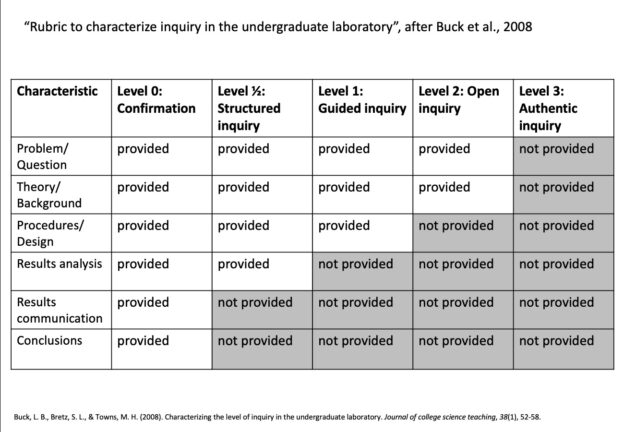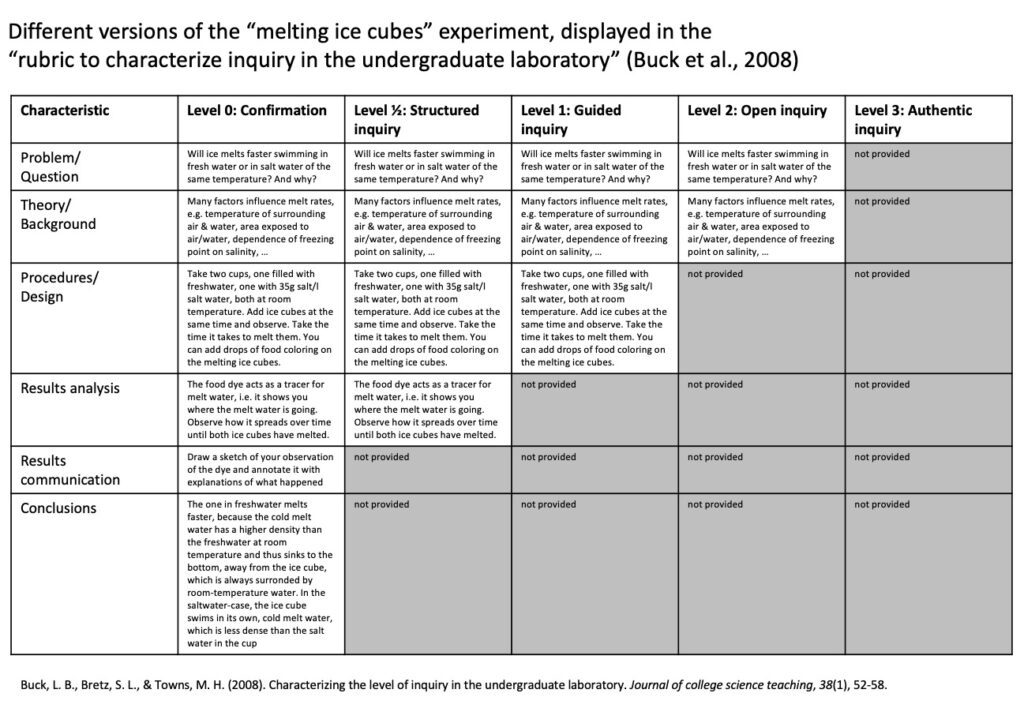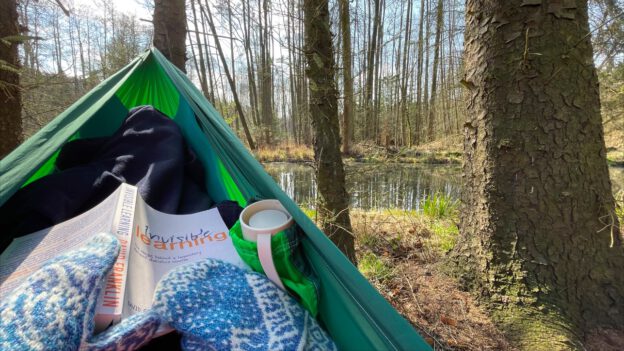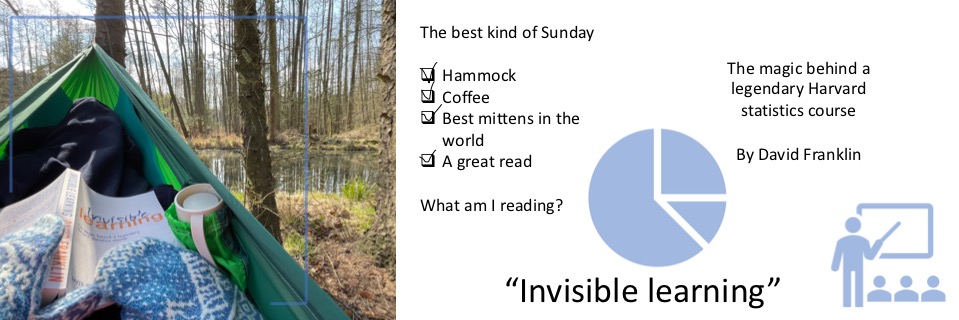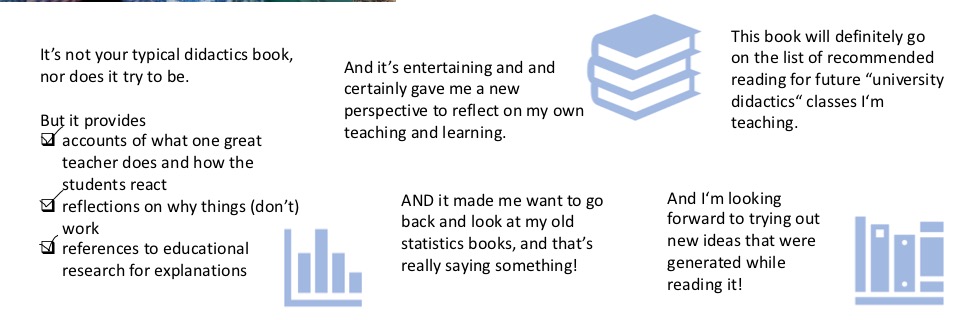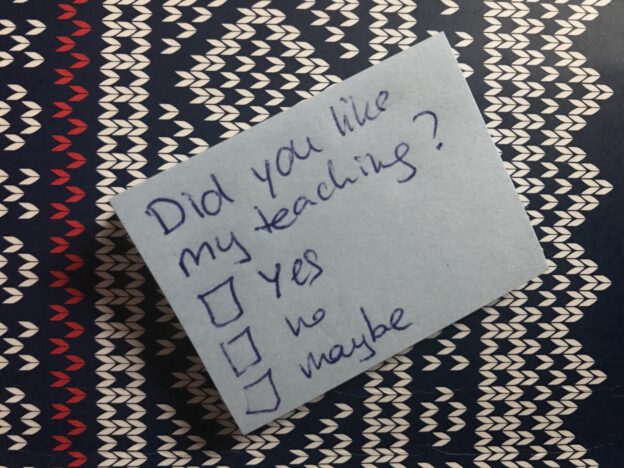Last week, I wrote about increasing inquiry in lab-based courses and mentioned that it was Kirsty who had inspired me to think about this in a new-to-me way. For several years, Kirsty has been working on developing practical work, and a central part of that has been finding out the types and amount of experiences incoming students have with lab work. Knowing this is obviously crucial to adapt labs to what students do and don’t know and avoid frustrations on all sides. And she has developed a nifty tool that helps to ask the right questions and then interpret the answers. Excitingly enough, since this is something that will be so useful to so many people and, in light of the disruption to pre-univeristy education caused by Covid-19, the slow route of classical publication is not going to help the students who need help most, she has agreed to share it (for the first time ever!) on my blog!
Welcome, Kirsty! :)
A tool to understand students’ previous experience and adapt your practical courses accordingly
Kirsty Dunnett (2021)
Since March 2020, the Covid-19 pandemic has caused enormous disruption across the globe, including to education at all levels. University education in most places moved online, while the disruption to school students has been more variable, and school students may have missed entire weeks of educational provision without the opportunity to catch up.
From the point of view of practical work in the first year of university science programmes, this may mean that students starting in 2021 have a very different type of prior experience to students in previous years. Regardless of whether students will be in campus labs or performing activities at home, the change in their pre-university experience could lead to unforeseen problems if the tasks set are poorly aligned to what they are prepared for.
Over the past 6 years, I have been running a survey of new physics students at UCL, asking about their prior experience. It consists of 5 questions about the types of practical activities students did as part of their pre-universities studies. By knowing students better, it is possible to introduce appropriate – and appropriately advanced – practical work that is aligned to students when they arrive at university (Dunnett et al., 2020).
The question posed is: “What is your experience of laboratory work related to Physics?”, and the five types of experience are:
1) Designed, built and conducted own experiments
2) Conducted set practical activities with own method
3) Completed set practical activities with a set method
4) Took data while teacher demonstrated practical work
5) Analysed data provided
For each statement, students select one of three options: ‘Lots’, ‘Some’, ‘None’, which, for analysis, can be assigned numerical values of 2, 1, 0, respectively.
The data on its own can be sufficient for aligning practical provision to students (Dunnett et al., 2020).
More insight can be obtained when the five types of experience are grouped in two separate ways.
1) Whether the students would have been interacting with and manipulating the equipment directly. The first three statements are ‘Active practical work’, while the last two are ‘Passive work’ on the part of the student.
2) Whether the students have had decision making control over their work. The first two statements are where students have ‘Control’, while the last three statements are where students are given ‘Instructions’.
Using the values assigned to the levels of experience, four averages are calculated for each student: ‘Active practical work’, ‘Passive work’; ‘Control’, ‘Instructions’. The number of students with each pair of averages is counted. This leads to the splitting of the data set, into one that considers ‘Practical experience’ (the first two averages) and one that considers ‘Decision making experience’ (the second pair of averages). (Two students with the same ‘Practical experience’ averages can have different ‘Decision making experience’ averages; it is convenient to record the number of times each pair of averages occurs in two separate files.)
To understand the distribution of the experience types, one can use each average as a co-ordinate – so each pair gives a point on a set of 2D axes – with the radius of the circle determined by the fraction of students in the group who had that pair of averages. Examples are given in the figure.

Prior experience of Physics practical work for students at UCL who had followed an A-level scheme of studies before coming to university. Circle radius corresponds to the fraction of responses with that pair of averages; most common pairs (largest circles, over 10% of students) are labelled with the percentages of students. The two years considered here are students who started in 2019 and in 2020. The Covid-19 pandemic did not cause disruption until March 2020, and students’ prior experience appears largely unaffected.
With over a year of significant disruption to education and limited catch up opportunities, the effects of the pandemic on students starting in 2021 may be significant. This is a quick tool that can be used to identify where students are, and, by rephrasing the statements of the survey to consider what students are being asked to to in their introductory undergraduate practical work – and adding additional statements if necessary, provide an immediate check of how students’ prior experience lines up with what they will be asked to do in their university studies.
With a small amount of adjustment to the question and statements as relevant, it should be easy to adapt the survey to different disciplines.
At best, it may be possible to actively adjust the activities to students’ needs. At worst, instructors will be aware of where students’ prior experience may mean they are ill-prepared for a particular type of activity, and be able to provide additional support in session. In either case, the student experience and their learning opportunities at university can be improved through acknowledging and investigating the effects of the disruption caused to education by the Covid-19 pandemic.
K. Dunnett, M.K. Kristiansson, G. Eklund, H. Öström, A. Rydh, F. Hellberg (2020). “Transforming physics laboratory work from ‘cookbook’ to genuine inquiry”. https://arxiv.org/abs/2004.12831
